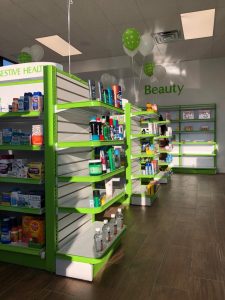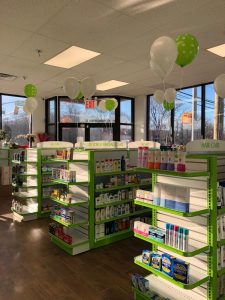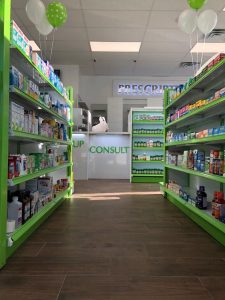The science of store layouts has been studied by corporate retailers and big-box giants for decades. In the end, the science is about money. How do you arrange your store layout to move the most merchandise? And to enhance the customer experience so they keep coming back?
A layout primarily refers to the floor plan and the arrangement of fixtures in your front end, which reflects how you want to flow your space and present your merchandise. The best layouts increase sales at every stage of the shopper’s journey through the store.
Your pharmacy layout influences your customer experience, for better or for worse. “Knowing how to best flow your customers through that space won’t only affect your bottom line, but it will impact how your customers perceive you,” said Jason Trail, a senior enterprise solutions architect and floor and space planning expert for Plantensive. “It will greatly impact the customer’s perception of how well-managed and well-run some locations are. So, unless you use your space appropriately, just putting out more merchandise isn’t necessarily going to help. It actually could hurt you in the long run.”
Like marketing, pharmacy design and merchandising are often overlooked in an independent pharmacy’s business plan. Whether your pharmacy is in the planning stages or has been in business for years, it pays dividends to think strategically about what will set your pharmacy apart from the competition and get people through the door.
Choose colors wisely. Most non-selling areas such as the walls and floors should be a neutral color; darker colors may be used for accents, service counters, vertical panels, and signage that can emanate individual personality. Lighter colors make the pharmacy appear more spacious, and the colorful merchandise becomes the attention getter. Avoid Retail Pharmacy Layout Designs on the floor covering that cause the space to look smaller and attract attention.
Back-End Operations, An ideal setup behind the pharmacy counter will allow for prescriptions to come in and go out as quickly and as safely as possible without employees having to reach around or step over each other or to waste time taking more steps than absolutely needed when completing a task. While wasted steps or excess bending and reaching may not seem like such a big problem during a single isolated task, multiplying these efforts many times during a single work day will quickly add up. Over a week or a month’s time, these inefficiencies can have a marked effect in a number of areas affecting service quality. Changing the back-end pharmacy layout should help



new pharmacy set up



 877.544.2999
877.544.2999